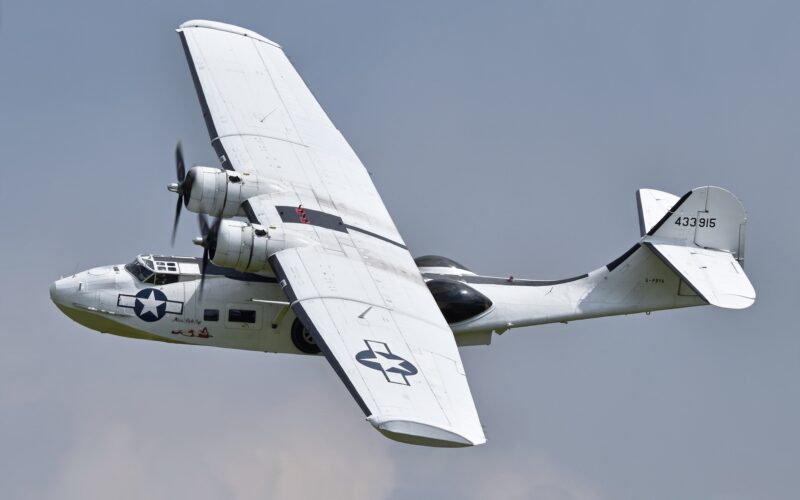Catalina Aircraft Announces Revival of Legendary Catalina II Amphibious Turboprop

Catalina Aircraft made a significant announcement on July 25, 2023, revealing the revival of the iconic Catalina aircraft as the Catalina II Amphibious Turboprop. The company has taken the initiative to launch a production re-start program for the Next Generation Amphibious Aircraft (NGAA) Catalina II, a remarkable twin turboprop amphibious flying boat. As part of this program, they are now open to accepting pre-orders.
The NGAA Catalina II is based on the well-established design principles of the 28-5ACF Catalina amphibious flying boat, which already holds certifications from the US Federal Aviation Administration and Transport Canada. The aircraft introduces two new production variants, namely the NGAA Civilian Variant and the NGAA Special Use Variant, catering to diverse airborne amphibious operations in private, commercial, government, and military sectors.
The NGAA Catalina II Civilian Variant boasts a 32,000-pound Maximum Take-Off Weight (MTOW) and twin turboprop engines, ensuring superior performance. It is also capable of operating in sea state 2 conditions, handling wind speeds of up to 6 knots and waves between 0.66 feet/20 centimeters. This variant can comfortably accommodate up to 34 passengers or 12,000 pounds of cargo.
On the other hand, the NGAA Catalina II Special Use Variant is designed to meet the specific requirements of government and military applications. It offers a higher 40,000-pound Maximum Take-Off Weight (MTOW) and is capable of operating in sea state 3 conditions, with wind speeds of up to 10 knots and waves reaching 2 feet/60 centimeters.
Lawrence Reece, President of Catalina Aircraft, expressed his excitement about the overwhelming interest in the revival of this legendary amphibian in a recent press release. The company is committed to moving the program forward rapidly.
Although specific pricing details have not been disclosed yet, Catalina Aircraft anticipates that deliveries will commence in 2029.
Seaplane Renaissance: A Glimpse into History and Geopolitical Significance
The Catalina flying boat, also known as the Consolidated PBY Catalina, holds a storied past, having played a significant role during the Second World War and beyond. Designed and manufactured by Consolidated Aircraft, the Catalina made its maiden flight in 1935 and served in various crucial roles, including long-range maritime reconnaissance, anti-submarine warfare, search and rescue missions, and transport duties. While production ceased in 1945, the Catalina continued to serve in both military and civilian capacities.
As global tensions rise in regions like the South China Sea and the Arctic, seaplanes are poised for a renaissance. With these areas becoming geopolitical hotspots, the versatility and strategic advantages offered by seaplanes are garnering renewed attention and interest.
Notable examples of seaplanes’ growing prominence include the 2007 entry into service of the ShinMaywa US-2 with the Japan Maritime Self-Defense Force and the maiden flight of the Chinese AG600 seaplane in 2020, expected to be operational by 2025. Moreover, Russia is reportedly exploring the possibility of resuming development on the Beriev Be-40, a Soviet-era amphibious flying boat prototype.
In February 2023, DARPA selected General Atomics and Boeing’s Aurora for the development of designs for the Liberty Lifter ground effect transport seaplane program. The Liberty Lifter aims to be a long-range, cost-effective X-Plane capable of seaborne strategic and tactical heavy lift operations.
